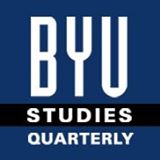BYU Studies

Keywords
Mormon studies, reading competency, Book of Mormon, Abish
Abstract
In chapter 19 of the book of Alma, we are introduced to Abish, described in the narrative as one of the “Lamanitish women” serving in King Lamoni’s court (Alma 19:16). Mormon’s account of her experience on the day of the king’s conversion is compelling for many reasons, but I would like to explore here how Abish and other important figures in the text function as model readers, exhibiting the traits and competencies that the Book of Mormon authors expected the future reader of their text to bring to the reading act. In fact, a careful analysis of important reading acts described throughout the Book of Mormon leads to a clear understanding of the several authors’ definition of an ideal or competent reader of their record. For though the authors are several, they seem to share a common conviction about competency. As the narrative progresses, it becomes more and more evident that the competent or ideal reader possesses one vital skill—something we might call spiritual sensitivity—that separates her or him from all the rest. Through their juxtaposition of various types of readers, the Book of Mormon chroniclers invite us to compare and contrast competing textual interpretations, a process that is meant to lead us, as actual readers, to evaluate our own particular competencies in deciphering the text before our eyes. The reading act itself is indeed among the book’s core themes.
Recommended Citation
Call, Michael J.
(2017)
"Reading Competency in the Book of Mormon: Abish and Other Model Readers,"
BYU Studies: Vol. 56:
Iss.
2, Article 4.
Available at:
https://scholarsarchive.byu.edu/byusq/vol56/iss2/4
